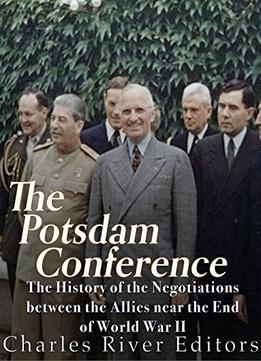
The Potsdam Conference: The History Of The Negotiations Between The Allies Near The End Of World War Ii
by Charles River S /
2016 / English / EPUB
1.4 MB Download
*Includes pictures *Includes accounts of the conference by some of the participants *Includes online resources and a bibliography for further reading *Includes a table of contents “If we can put this tremendous machine of ours, which has made this victory possible, to work for peace, we can look forward to the greatest age in the history of mankind. That's what we propose to do.” - President Harry S. Truman at a July 1945 flag-raising ceremony in Berlin Standing in history like a milestone marking the boundary between one era and the next, the Potsdam Conference brought together the leaders of the three major Allied powers – the United States, the Soviet Union, and the United Kingdom – for the last time at the end of World War II and at the threshold of the Cold War. A follow up to the Yalta Conference just five months earlier, Potsdam attempted to work out the contours of the postwar world. Though it came so shortly after Yalta, the Potsdam Conference also highlighted a turnover of leadership on the world stage. British Prime Minister Winston Churchill, who gave his nation hope in the darkest days of World War II, had suffered a stunning defeat at the hands of the Labor candidate Clement Attlee, who replaced him towards the end of the Conference. President Franklin Delano Roosevelt died prior to the meeting, leading to his replacement by the new president Harry S. Truman, a keen-minded pragmatist whose intense focus on America's advantage contrasted with Roosevelt's internationalism. Only General Secretary Josef Stalin, dictator of the Soviet Union, remained unchanged from the earlier summit. Destined to continue in power for another 8 years until his death (possibly at the hands of Lavrenty Beria), the Russian strongman found himself confronting a world in which the United States possessed the atomic bomb. Though the countries had often discussed Russia joining America and Britain’s fight against the Japanese, it became clear at Potsdam that this was not going to happen. Instead, Stalin pleaded for help for his own country, which had been decimated by the fighting with Germany. Russia had lost more than 30,000 factories and so much farm land that the vast majority of the population was suffering from malnutrition. Stalin was also particularly concerned that the Allies might stage an invasion of Russia and overthrow his regime. While it may have seemed at the time that he was just being paranoid, it is now known that George Patton was already pushing Truman and the other world leaders to go ahead and finish the weakened Soviets off, meaning Stalin might actually have been wise to build up communist governments in Czechoslovakia, East Germany, Bulgaria and elsewhere. The British and Americans didn’t see it that way, though. Instead, they assumed that Stalin was expanding the Soviet Union in preparation for invading Europe. The Europeans appealed to the Americans for help and with them would go on to create the North Atlantic Treaty Organization in 1949. This mutual mistrust among all parties involved marked the beginning of the Cold War. The Potsdam Conference: The History of the Negotiations Between the Allies Near the End of World War II looks at the final major conference of the war and its results. Along with pictures of important people, places, and events, you will learn about the Potsdam Conference like never before, in no time at all.











